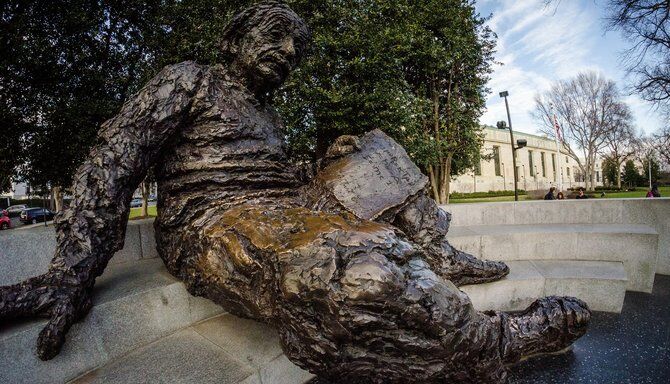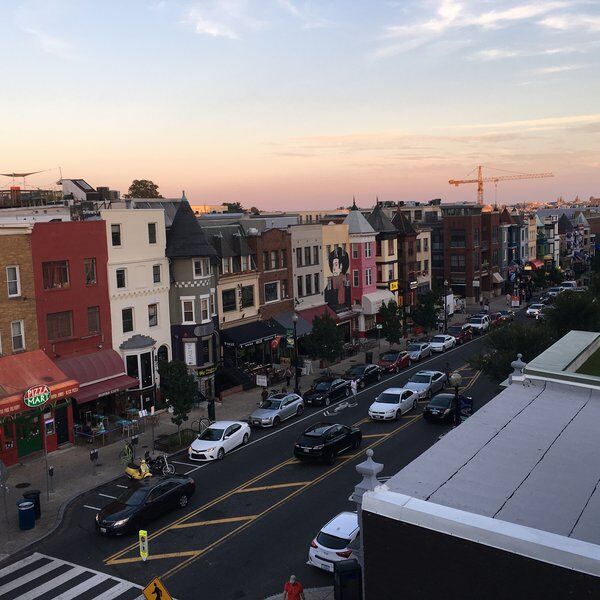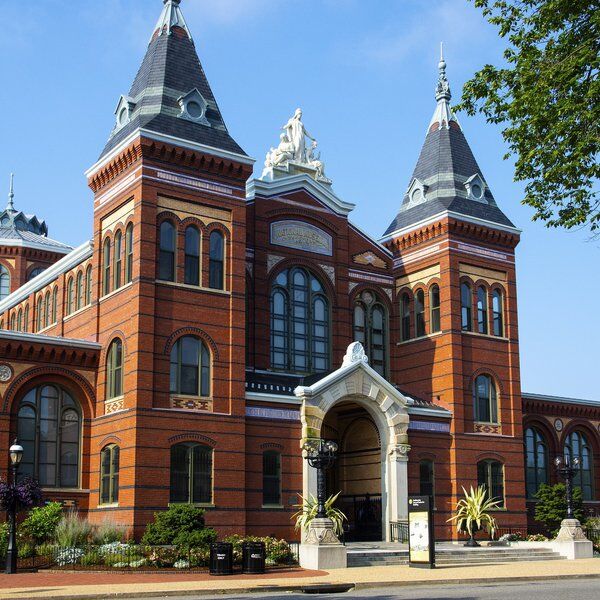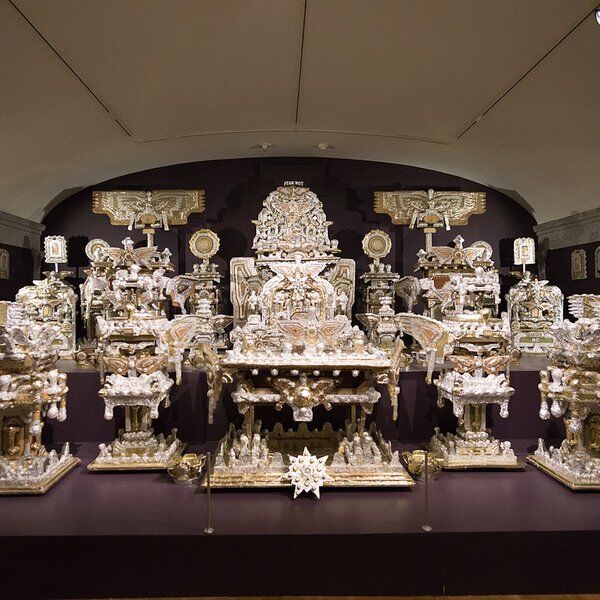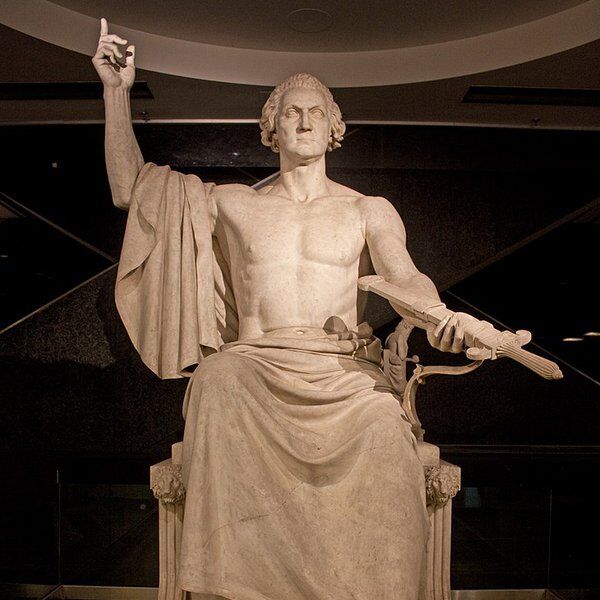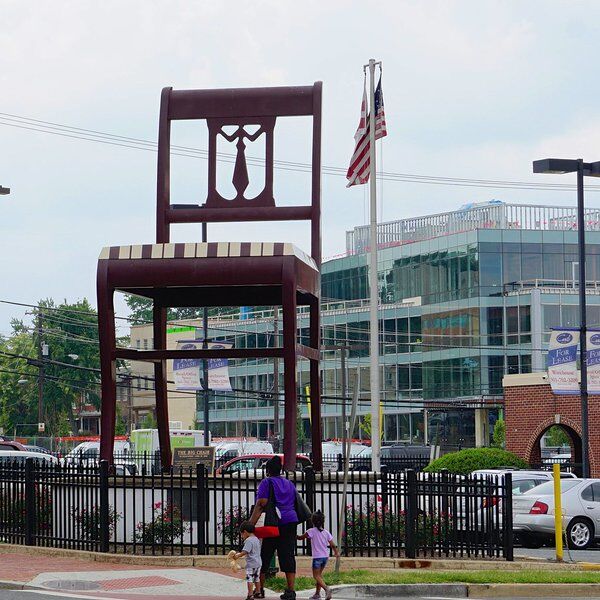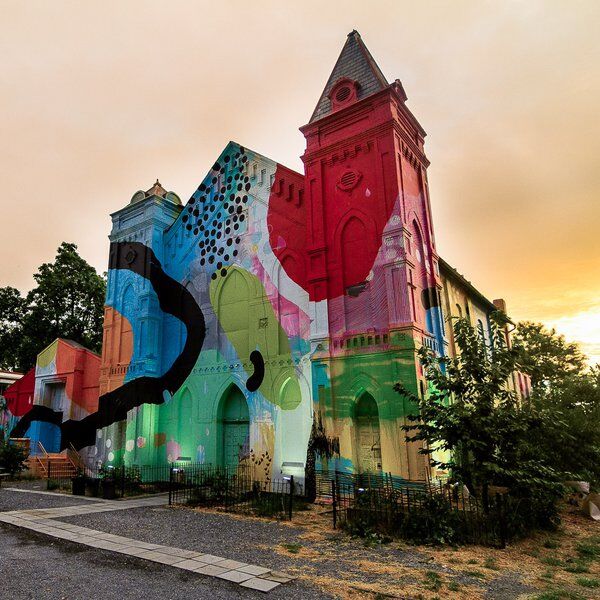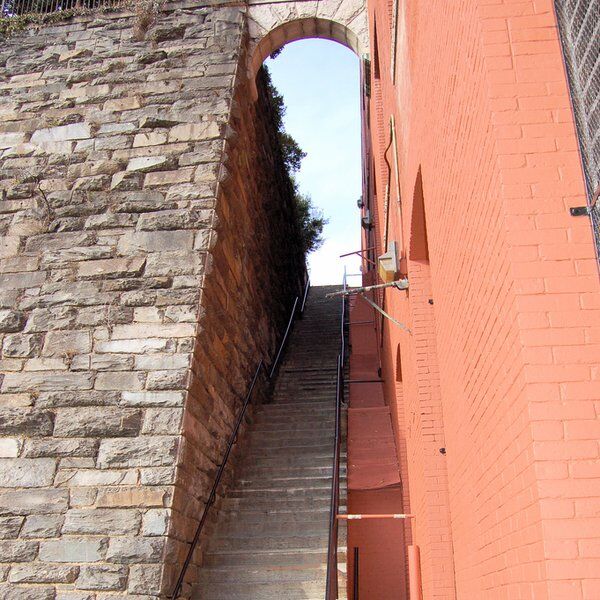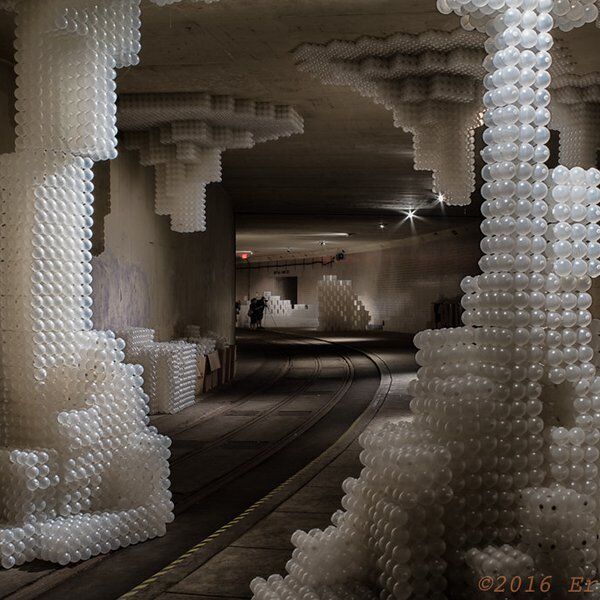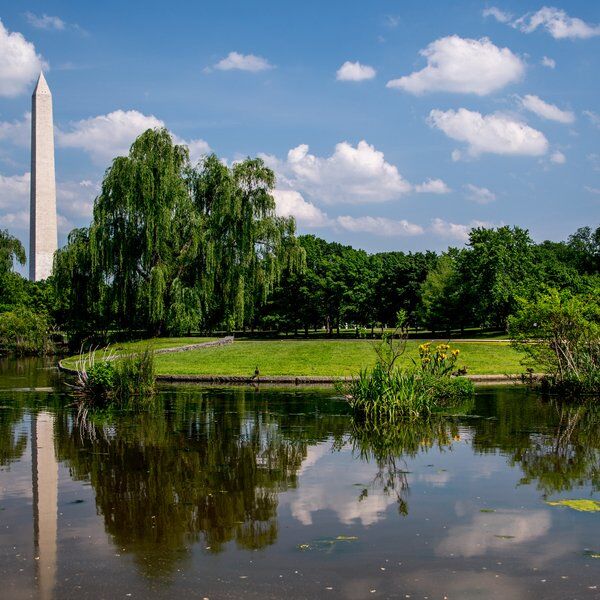Discover The Albert Einstein Memorial in Washington, D.C.
Clad in bronze and weighing a hefty 4 tons, the Albert Einstein Memorial is a 12-foot depiction of the scientist, situated in a small grove near the National Academy of Sciences in Washington DC. Sculpted by Robert Berks, the monument depicts Einstein seated casually on a three-step bench made of white granite from Mount Airy, North Carolina.
The statue's oversized proportions make it hard to miss, but what makes this memorial extra special is what’s underfoot. The base is a stunning circular "star map" crafted from emerald pearl granite from Larvik, Norway. Embedded with over 2,700 tiny metal studs, this map shows the exact positions of celestial bodies—stars, planets, quasars, and even asteroids—as they were on the memorial’s dedication day, April 22, 1979. It’s a feature that invites visitors to stand in Einstein’s universe—quite literally!
Fun fact: if you stand in the center of this map and speak, you’ll hear your voice echo back to you. It’s like the universe itself is responding to your thoughts!
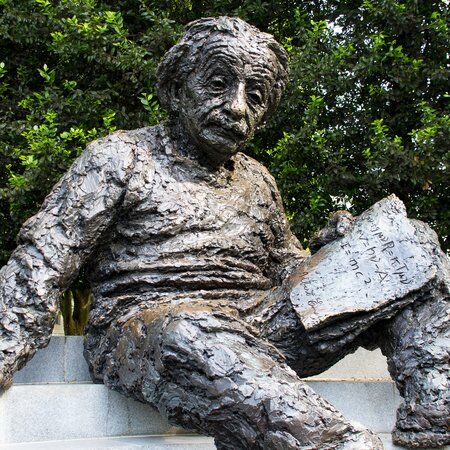
About Albert Einstein
Ah, Albert Einstein—the wild-haired genius who made us rethink reality. Born in 1879 in Ulm, Germany, Einstein grew up in Munich and had a knack for asking big questions like, "What is light, really?" Turns out, light is a stream of energy particles called "quanta," and Einstein’s explanation of this phenomenon snagged him the 1921 Nobel Prize in Physics. Not too shabby for a guy who started his career at a patent office!
Einstein wasn’t just about E=mc² and reshaping physics, though. He was a passionate advocate for civil rights, fleeing Nazi Germany and choosing to live in countries that upheld liberty, tolerance, and equality. His words on form the second of the three quotes etched into the memorial:
“As long as I have any choice in the matter, I shall live only in a country where civil liberty, tolerance, and equality of all citizens before the law prevail.”
Beyond talking the talk, Einstein wrote it all down, publishing over 300 scientific papers and 150 non-scientific works. By the time he passed in 1955, Einstein had not only revolutionized our understanding of the universe but had also become a symbol of intellectual curiosity and humanitarianism.
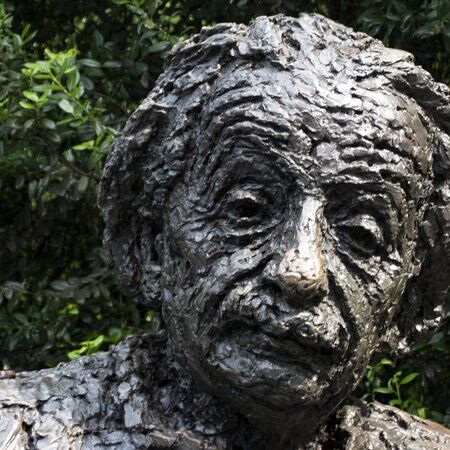
The Man Behind The Albert Einstein Memorial
Alongside the Albert Einstein Memorial, Robert Berks is known for his iconic bust of President John F. Kennedy at the Kennedy Center and the Mary McLeod Bethune statue in Lincoln Park. Berks based the Einstein statue on a bust he sculpted of Einstein in 1953 at Einstein’s home in Princeton.
The sculptor's artistic style emphasizes warmth and relatability—qualities that make Einstein, with his sandals and slightly rumpled appearance, feel like an old friend welcoming you to sit and chat. Landscape architect James A. Van Sweden added the finishing touches, creating a grove filled with elm and holly trees.
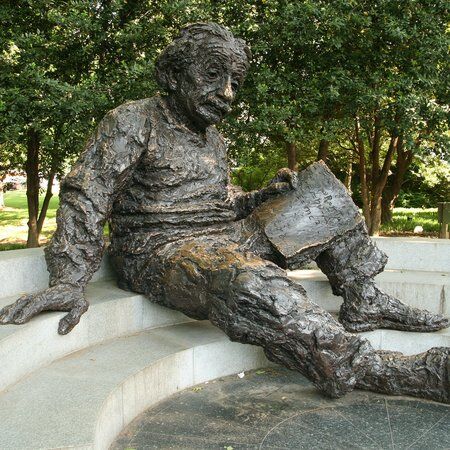
Why was The Albert Einstein Memorial Created?
The memorial was unveiled on April 22, 1979, during the National Academy of Sciences' annual meeting. This date was chosen to honor the centennial of Einstein’s birth, and the ceremony was attended by thousands, including U.S. President Jimmy Carter.
Einstein had a long-standing relationship with the National Academy of Sciences, first as a foreign associate in 1922 and later as a full member after becoming a naturalized U.S. citizen in 1942. The memorial symbolizes not just his scientific achievements but also his his belief in the power of knowledge to better the world—a value reflected in one of the three quotes engraved on the granite bench:
“The right to search for truth implies also a duty; one must not conceal any part of what one has recognized to be true.”
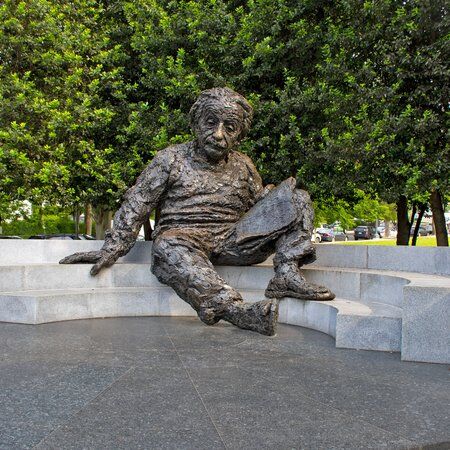
What’s Inscribed on the Statue?
No Einstein tribute would be complete without a nod to his groundbreaking theories. The bronze papers in Einstein’s left hand feature three of his most famous equations:
- The photoelectric effect
- The theory of general relativity
- The equivalence of energy and matter (E = mc²)
But it’s not all numbers and formulas. Around the back of the bench, you’ll find three of Einstein’s most memorable quotes. The last one aptly reflecting his awe of the universe:
“Joy and amazement at the beauty and grandeur of this world of which man can just form a faint notion.”
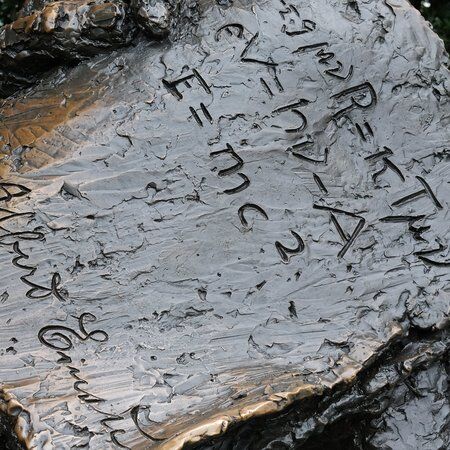
Facts About the Albert Einstein Memorial
- Selfie-Friendly: The statue is one of the few in D.C. that actively invites physical interaction—so go ahead, climb up onto Einstein’s lap or or trace the celestial map underfoot!
- Celestial Accuracy: The star map was created by astronomers from the U.S. Naval Observatory and accurately represents the night sky on the dedication date.
- Global Presence: Replicas of this memorial can be found at the Israel Academy of Sciences and Humanities and the Georgia Institute of Technology.
- A Teaching Moment: The monument is also a popular spot for classes, acting as a unique outdoor classroom for lessons in astronomy, physics, and history.
Top Tip: If you’re exploring D.C. with friends, consider joining a scavenger hunt with CityDays. Our interactive tours often include stops like the Albert Einstein Memorial and offer a fun way to discover the city’s treasures.
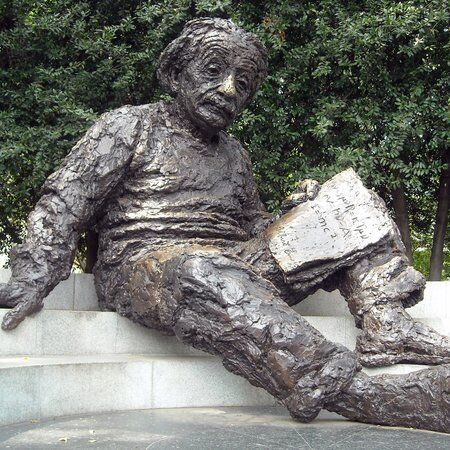
Getting Yarn-Bombed: Art and Popular Culture
The Einstein Memorial isn’t just a hit among tourists; it’s also left its mark in pop culture. Remember the 20th season of Sesame Street? The statue made a cameo in the opening title sequence.
And for those with a sweet tooth, there was once a replica of the memorial made entirely of dark and white chocolate on display at the Marriott Wardman Park Hotel in D.C. Yes, Einstein and chocolate—a pairing as brilliant as his theories.
But perhaps the quirkiest moment in the statue’s history came in July 2012 when Polish-born artist Olek "yarn-bombed" it. The entire statue was wrapped in a crocheted cover of pinks, purples, and teal, transforming the relaxed genius into a flamboyant piece of art. Einstein himself would probably have appreciated the creative flair!
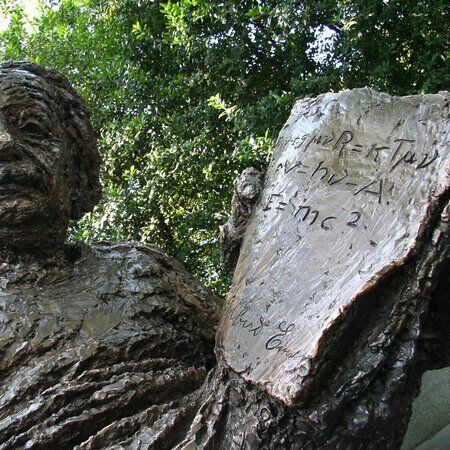
Visiting the Albert Einstein Memorial
Finding the Einstein Memorial is as easy as solving E = mc² (okay, maybe easier). It’s located at 2101 Constitution Avenue NW, just a stone’s throw from the National Mall and Constitution Gardens. The site is accessible 24/7, so you can drop by whenever inspiration—or curiosity—strikes.
If you’re taking the Metro, the nearest stops are Foggy Bottom (0.7 miles away) and Smithsonian (1.4 miles away). Be prepared to stretch those legs for a short walk. Parking can be a bit tricky, but spots on Constitution Avenue or 22nd Street are usually available via the ParkMobile app. Alternatively, grab a Capital Bikeshare bike or rent an electric scooter for a breezy ride.

Go Beyond the Albert Einstein Memorial with CityDays
After climbing into Einstein's lap for a selfie, or reading his famous quotes, why not continue your Washington adventure with a CityDays scavenger hunt?
You’ll find curated trails and hunts all over Washington. All you have to do is team up with your friends, family or whoever to solve riddles, complete challenges and answer trivia to lead you on an unforgettable journey around Washington's most intriguing streets.
The best part? We’ll recommend top-rated bars, cafés and restaurants and give your team the chance to earn rewards by competing on our leaderboard.
CityDays gives you total freedom to start and finish whenever you like, take extra breaks if you want or need them, and it’s suitable for people of all ages.
You’re also guaranteed your money back if you don’t have an amazing time - although our previous reviews speak for themselves: we’re rated 5/5 on TripAdvisor and 4.95/5 on Google Reviews!
